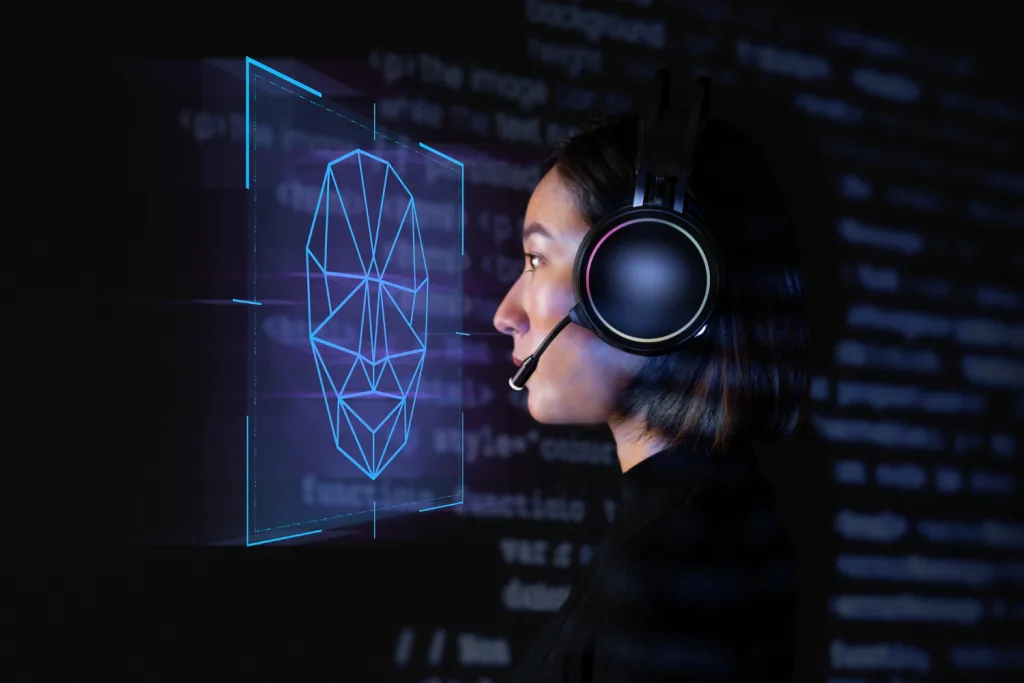As generative AI continues to evolve, the creation of deepfakes has raised significant concerns. Tech companies are actively seeking ways to monitor and mitigate the misuse of this technology.
They are developing and implementing a combination of technological solutions, ethical guidelines, and collaborative efforts with research institutions to detect and control deepfake content.
This vigilant approach aims to safeguard users and maintain trust in digital media.
How are tech companies detecting deepfakes?

Tech companies use machine learning algorithms to identify deepfakes, distinguishing between authentic and synthetically generated content. These algorithms undergo training on extensive datasets containing both real and deepfake images and videos.
Through this process, they learn to detect subtle discrepancies not easily noticeable to the human eye. Specifically, these algorithms analyze inconsistencies in facial expressions, lighting, and background noise.
Furthermore, certain companies are exploring blockchain to create secure, unchangeable records of digital media, improving authenticity verification.
Another layer of detection includes partnering with academic researchers and industry experts to enhance the capacity to identify deepfakes. Through these partnerships, organizations can leverage cutting-edge research and sophisticated analytical tools.
For instance, companies are working on techniques that detect deepfakes by analyzing the heartbeat patterns and blood flow in video imagery, which are challenging to replicate accurately in synthetic media.
What collaboration efforts are in place to combat deepfakes?
Combating the spread of deepfakes relies on active collaboration. Tech companies actively participate in multi-stakeholder initiatives that unite industry leaders, policymakers, and civil society organizations.
The Deepfake Detection Challenge, an illustrative case, exemplifies a collaborative project between tech giants and academic institutions, intending to drive the development of new methods for detecting deepfakes. This initiative underscores the significance of pooling resources and knowledge to address the issue.
Moreover, tech companies are engaging with legislative bodies and international organizations to develop policies and standards around deepfake creation and dissemination. By shaping the regulatory landscape and ensuring a universal approach to the problem, they can create a more coherent and effective response to the threats posed by deepfakes.
Transparency in these efforts is crucial for the broader adoption and enforcement of any agreed-upon measures.
What technological advancements are aiding in deepfake monitorization?

The technological front is fast evolving, with advancements like digital watermarking and content attribution systems growing more prevalent.
Digital watermarking involves embedding a unique code into videos and images, which can be detected to confirm content authenticity.
Content attribution systems, on the other hand, provide a traceable, digital footprint that follows media across the internet, revealing any alterations made from its original state.
Artificial intelligence itself is rapidly advancing and is at the forefront of fighting against deepfakes. AI-based forensic tools can now analyze audio to detect synthetic voice alterations. The same goes for video, where new algorithms can scrutinize frame-by-frame to find any trace of manipulation.
As AI becomes more sophisticated, it continually improves these detection methods, steadily closing the gap on deepfake creators.
Are there any industry standards or best practices for deepfake detection and management?
Industry standards and best practices for deepfake detection are emerging, with many tech companies adopting or developing their own ethical guidelines. These standards often emphasize transparency, user consent, and clearly labeling synthetic content.
The aim here is to establish a framework that enables the creative and positive use of generative AI while preventing deception or harm. Companies adopt moderation policies and terms of service that strictly prohibit the malicious use of deepfakes.
The ethical use of AI is a key focus, and many companies refer to documents like the IEEE’s Ethically Aligned Design or the EU’s Ethics Guidelines for Trustworthy AI.
These frameworks are designed to ensure that AI technology, including deepfake software, is developed and used in a way that upholds human rights, privacy, and democratic values. By adhering to these, tech companies are setting an example of responsibility in the digital age.
For a broader perspective on the implications of generative AI and deepfake technology, refer to the “Deepfake Examples in Generative AI: From Tech Triumphs to Cautions” article that covers diverse scenarios in which these technologies are employed, both beneficially and maliciously.
Conclusion
In conclusion, monitoring the use of deepfakes is a multifaceted endeavor requiring technology, collaboration, advancement, and ethical standards. From developing sophisticated detection algorithms to engaging in industry collaborations, tech companies are addressing the deepfake phenomenon head-on.
Technological innovations like digital watermarking and AI-based forensics are proving instrumental, while industry standards guide responsible practice. As this field evolves, companies must stay vigilant and proactive, ensuring that the benefits of generative AI can be enjoyed without the cost of misinformation and harm.
- Analyzing Patterns in Failed Products - July 25, 2024
- Hybrid Cryptographic Systems - July 24, 2024
- Inadequate Threat Intelligence Integration - July 23, 2024
